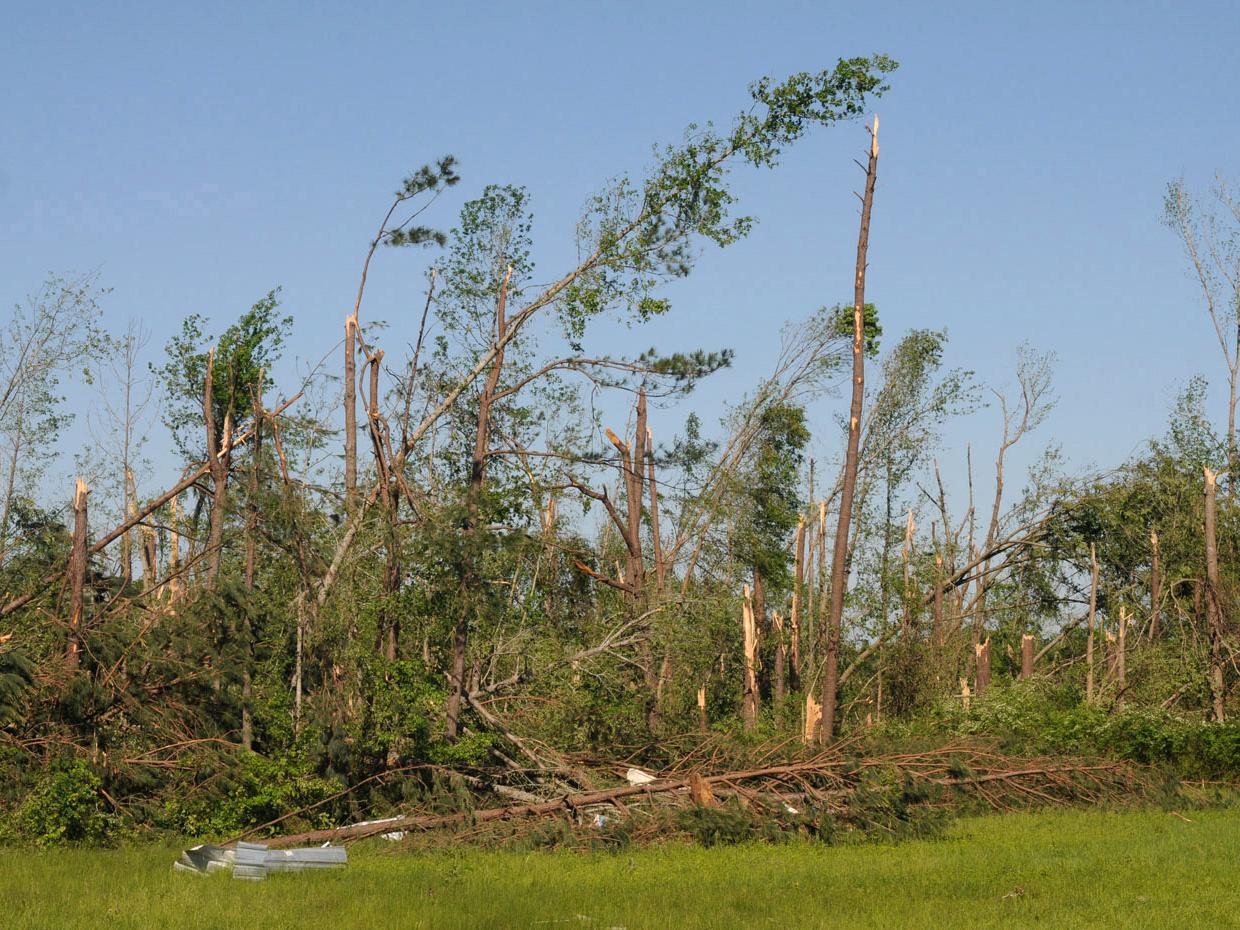Information Possibly Outdated
The information presented on this page was originally released on April 29, 2011. It may not be outdated, but please search our site for more current information. If you plan to quote or reference this information in a publication, please check with the Extension specialist or author before proceeding.
Tornadoes' destruction brings agricultural loss
MISSISSIPPI STATE – The tornadoes of April 27 took a toll on Mississippi’s agriculture, with timber, the state’s No. 2 most valuable agricultural commodity, taking the biggest hit.
Massive storms have swept the state all month, bringing hail, torrential rains and tornadoes. Wednesday was the worst day, with the majority of the damage scattered across the northern part of the state.
Tornadoes and straight-line winds caused timber losses in Smith, Jasper, Newton, Clark, Monroe, Itawamba, Carroll, Holmes, Montgomery, Lafayette and possibly other counties. The Mississippi Forestry Commission conducted fly-overs Thursday and Friday to spot damaged areas. They will make more precise on-ground estimates of timber losses next.
Russell Bozeman, director of forest protection and forest information with the commission, said data collection is focusing on the timber near Taylor, Philadelphia, Smithville, Raleigh and Eupora, as these areas were among the hardest hit.
“The damage is so widespread that we don’t have any estimates yet of dollar value or volume of timber lost,” Bozeman said. “We’re still in the collection mode. It’s taking a little longer than normal because there is so much damage over such a wide area.
“Instead of one big damage path for us to find and fly over, now it’s taking us 48 hours just to get the GPS data in,” he said.
Grady Dixon, an assistant professor of geosciences at Mississippi State University, said the bulk of the storms battered areas of the state north of Interstate 20 and east of Interstate 55.
“April is always an active month for tornadoes, especially in the Southeast,” Dixon said. “It is not surprising that we have a lot of tornadoes, but we have broken the 60-year record.”
April’s previous record was 267 tornadoes in the country, set in 1974. More than 300 tornadoes have been recorded this April. Dixon said the rise in the number of people having cell phones with cameras has increased the number of tornadoes reported in recent years.
“The number of tornadoes going up isn’t alarming,” Dixon said. “We look at how many days with tornadoes we have. It would start to be alarming if the conditions were ripe for tornadoes on more days than ever before.”
The current record for April is 23 days with tornadoes across the country. There have been 20 days with tornadoes this month.
Localized heavy rain and hail caused other damage in places.
Don Respess, Coahoma County Extension director, said a line of hail caused damage across Quitman and Coahoma counties on Wednesday.
“Corn was beat up pretty badly, but I think it will be all right,” Respess said. “The wheat concerns me. At the growth stage it’s in now, hail could be devastating to that crop.”
An initial examination of fields across his area of the north Delta showed some completely destroyed wheat fields, but Respess said the damage to wheat was not widespread.
About 40 center-pivot irrigation systems in the Clarksdale area were damaged by storms, a number Respess called significant.
Erick Larson, Extension Service grain crops agronomist, said emerged corn is susceptible to physical damage from hail, but it doesn’t mean it will kill the plants or cause yield loss.
“Before the corn reaches about 12 inches tall, the growing point remains under the soil surface and protected from physical damage. Corn can continue developing new leaves if there are favorable growing conditions that promote a quick recovery,” Larson said.
By late April, most of the state’s corn was less than 18 inches tall, but wheat will be ready to harvest by late May. Headed and fully developed wheat is very susceptible to hail damage.
“It is completely exposed, and hail will not only strip vegetation off but break the stems very readily,” Larson said. “A broken stem causes the kernels to stop filling and it can lay over so the combine can no longer harvest the damaged heads.”
Jerry Singleton, Extension agricultural agent in Leflore County, said his area had limited wind damage when some small tornadoes hit Wednesday.
“The only real damage to fields was in how much debris they left scattered,” Singleton said.
















